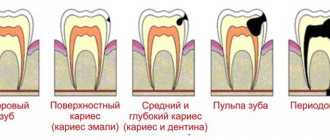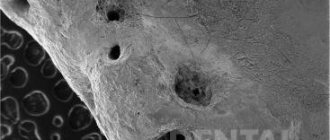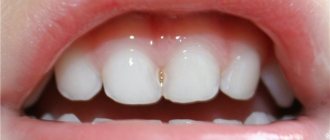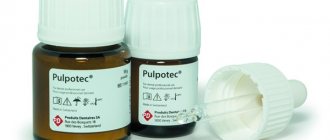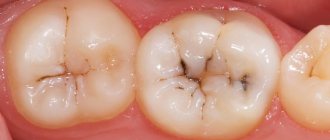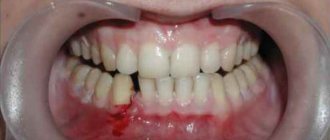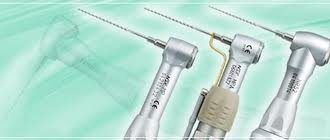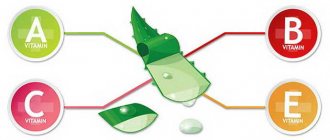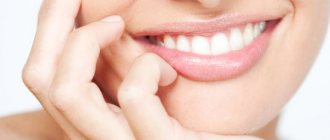October 7, 2020 Last revised: December 14, 2020 Gum disease
If you are a member of the age group of 35 and older, then with a 90% probability we can say that you have problems with your gums. These are the world statistics: 9 out of 10 adults suffer from periodontal disease of one form or another. Those who count themselves among the healthy lucky 10% should be reminded: the initial stages of periodontal disease are painless and can only be diagnosed by barely noticeable blood streaks during brushing. It’s not for nothing that toothpastes from commercials are sold out with such excitement – everyone wants to get rid of unpleasant symptoms. But you should not blindly trust television advertising - the problem can only be solved in the dental chair; laser gum treatment will help you.
Photodynamic therapy: the essence of the method
The use of laser in dentistry is often called an innovative method, although its effectiveness for the treatment of periodontal diseases was proven back in 1990. Nine years later, the laser therapy method has left the pages of scientific research for the general public and is now available in almost every reputable dental clinic.
A laser (also known as a quantum generator) is a technical device that emits light in a narrow range of a directed, focused beam of electromagnetic waves. These same waves destroy the cells of pathogenic microorganisms, making the treated area literally sterile. Dentists unanimously call this method the simplest and most easily controlled way to destroy harmful bacteria, disinfect the oral cavity and create conditions for successful further treatment.
Lasers that are used for dental purposes are different - diode, argon, carbon dioxide, neodymium and others. Which one to use in each specific case is the decision of the periodontist.
According to European statistics, the probability of getting rid of periodontitis using photodynamic therapy is 92%. This indicator significantly exceeds the effectiveness of treatment with ultrasound, ozone, antibiotics and surgical intervention.
So that the doctor can see the accumulation of pathogenic microflora and act on it with a laser, a special gel - a photosensitizer - is first applied to the gums. It only takes a few minutes for it to penetrate bacterial cells and sensitize them - this means marking them, making them visible. The dentist then directs a diode laser at the marked area, which destroys the cell membranes of pathogens, viruses and fungi. The result is that the problem area becomes sterile, inflammation goes away, and local immunity increases.
Advantages and applications of lasers in pediatric dentistry
May 24, 2017
| RISHITA JAJU (Reston, Virginia) Certified Pediatric Dentist |
In 2013, the American Academy of Pediatric Dentistry recognized the use of lasers as an effective tool for restorative dental and soft tissue procedures in infants, children, and adolescents, including children with special health care needs.
In the modern world, laser technologies are becoming the “gold standard” in pediatric dentistry. The main benefits of lasers include targeted ablation, hemostasis, analgesia, decontamination and photobiomodulation. The use of lasers contributes to the improvement and development of care in many areas of dentistry, including periodontics. In addition, lasers are used for teeth whitening. An additional benefit of using a laser is especially important for a pediatric dentist: it is primarily a reduction in excitement and anxiety when visiting a doctor.
Lasers reduce the need for local anesthesia and the use of handpieces for the preparation of most class I–VI cavity fillings and dental restorations. This makes visiting the dentist much easier for everyone—the patient, their parents, and the dental team. Children interact better during restorations, pulp disease treatments, and laser-assisted surgical procedures, which significantly improves the quality of care and improves the treatment process.
BASIC CONCEPTS ABOUT LASERS
The term "laser" is an abbreviation from English. Light Amplification by Stimulated Emission of Radiation, which translates as “light amplification through stimulated emission.” In a laser, an active medium is stimulated to produce photon energy, which is delivered as a beam of monochromatic light of a specific wavelength. Wavelengths in the range of 193–10,600 nanometers (nm) are used in medicine and dentistry.
Soft and hard tissues of the oral cavity have a distinct affinity for absorbing laser energy of a certain wavelength. For example, an erbium-chromium laser (Er,Cr:YSGG) contains erbium and chromium ions, as well as yttrium scandium gallium garnet crystals, and when excited (pumped by an electric current) emits at a fixed wavelength of 2,780 nm. In diode lasers, the excited substance is a semiconductor that operates at wavelengths of 810–980 nm.
The clinical performance of lasers is influenced by many parameters such as power, operating mode, delivery system, etc. A detailed description of how lasers work is beyond the scope of this article, but it is important to understand the basic principles of laser physics before selecting a laser for your dental practice. Understanding these principles will allow you to make an informed decision about the type of laser that will provide the most benefit to you and your patients.
TREATMENT OF CARIES
About 50% of childhood caries is not treated due to the difficulty of interacting with children during treatment. Lasers for all types of tissue can effectively remove carious tissue with minimal involvement of the structures surrounding the tooth, since caries-affected tissue has a higher water content than healthy tissue. Lasers can remove carious tissue and prepare teeth for restorative procedures in children and adolescents. The non-contact mode of hard tissue lasers eliminates the vibrational effects of a conventional high-speed handpiece, making tooth preparation comfortable and reducing anxiety in children and adolescents. Particularly beneficial for pediatric patients is the fact that lasers have been shown to have an analgesic effect on hard tissue, reducing the need for local anesthesia required during tooth preparation. Therefore, the patients’ well-being improves in the postoperative period, and there is no numbness of the lips/tongue. The study showed that after unilateral or bilateral conduction anesthesia of the mandibular nerve, 13% of children aged 2 to 18 years had soft tissue damage. The incidence of soft tissue injury was highest in the youngest patients: 18% in children under 4 years of age, 16% in children aged 4 to 7 years, 13% in 8–11 year old children, 7% in children 12 years and older.
ENDODONTIC TREATMENT
Hard tissue lasers have demonstrated effectiveness in direct and indirect pulp capping procedures in endodontic procedures, including pulpotomy of primary teeth and root canal disinfection. The effectiveness of laser pulpotomy was comparable to formocresol pulpotomy, but with the significant advantage that with laser treatment there is no need to use formocresol for disinfection, which eliminates all safety concerns associated with its carcinogenic and mutagenic properties. In addition, there has recently been increasing concern regarding internal resorption of primary teeth treated with ferrous sulfate, which can be avoided by using a laser to disinfect and coagulate the pulp.
The effectiveness of laser technology in cleaning the root canal system has also been demonstrated. For example, the erbium-chromium laser shows cleaning and shaping efficiencies similar to rotary dental instruments and superior to those of hand-held dental instruments. This is especially promising in the treatment of young permanent teeth affected by trauma or pre-eruptive caries due to enamel hypoplasia.
SOFT TISSUE PROCEDURES
The combination of analgesic and hemostatic properties of the laser allows most soft tissue procedures to be performed with minimal or no local anesthesia and, in the vast majority of cases, without the need for sutures. Therefore, wound healing occurs faster, with less postoperative discomfort and less need for analgesics after surgery. In addition, since the laser has disinfectant and bactericidal properties, the need for postoperative antibiotic use is reduced.
Clinical applications of soft tissue lasers in pediatric dentistry include frenectomy, operculectomy, prevention and treatment of pre-eruptive caries and preparation of teeth for orthodontic treatment, gingival grafting, gingivectomy, removal of mucosal lesions, biopsies, and treatment of aphthous ulcers and herpetic lesions.
Laser frenectomy to correct a labial or tongue tie in infants, toddlers, and older children can be performed in a doctor's office. The positive effect of this procedure on the growth and development of the maxillofacial region of a child patient in terms of improving feeding and swallowing ability, speech development, and caries prevention is generally recognized.
LASER REDUCTION OF BACTERIA
Chronic gingivitis, aggressive periodontitis, and generalized aggressive periodontitis are types of gum disease in children. For mild, moderate, and severe periodontal problems, laser bacterial reduction (LBR) may be performed to help return the periodontium to a healthy state. Most often, LRB is performed using a diode laser: this is achieved by inserting the laser tip into the free space of the periodontal pocket and moving it in a sliding motion to achieve maximum bacterial destruction. Various studies have shown many positive effects of LRB, including a reduction in the migration of planktonic cell forms from 21 to 58 days, an increase in ATP synthesis, and a reduction in anaerobes entering the bloodstream.
For more severe periodontal diseases, erbium-chromium, carbon or YAG-neodymium lasers are used to remove necrotic epithelial tissue. Periodontal surgical procedures are performed either on a single site or on multiple sites, as determined by the clinician and dependent on the patient's condition. The erbium-chromium laser has a radial pulse cone tip (RFPT) designed to deliver laser energy into the walls and floor of the periodontal pocket, targeting the affected soft tissue, root surface and infected bone simultaneously. Ongoing controlled studies show that laser produces similar results when compared to other treatment options.
ADVANTAGES OF LASER USE IN CHILDREN'S PATIENTS
The use of laser in pediatric dentistry helps create a positive experience of visiting the dentist by reducing the child's fear and anxiety. When laser is used for dental treatment, children are more willing to interact with the doctor due to its minimally invasive nature. Laser equipment provides a stark contrast to traditional anesthesia and high-speed drills, using a scalpel and sutures or electrosurgery for soft tissue procedures. Overall, this results in a better experience for the patient and greater satisfaction and trust on the part of the parents.
BENEFITS OF USING LASERS FOR THE PEDIATRIC DENTAL PRACTICE TEAM
Pediatric dentists take great pride and satisfaction in providing care to their patients. For many, dentistry is more than a career, it is also a calling that is personally fulfilling for a variety of reasons. Becoming a certified laser dentist requires specialized education and training, which instills a new passion for the technical aspects of dentistry and provides a higher level of skill and knowledge. Every time a dentist and his team are able to use their skills and technology to improve a patient's condition, it brings a sense of fulfillment and personal satisfaction. In addition, lasers can significantly improve productivity.
Using a laser, the clinician is able to treat multiple quadrants in fewer visits because there are no restrictions imposed by the dosage of local anesthetics. In addition to the ability to perform more procedures in a single visit, laser technology allows the addition of new procedures already discussed, such as frenectomy and other types of soft tissue surgery or endodontic treatment.
LIMITATIONS WHEN WORKING WITH LASER IN PEDIATRIC DENTISTRY
The use of lasers requires modifications to clinical procedures that need to be taught in specialized training courses. The dental team, the patient, and everyone present must always wear wavelength-specific safety glasses while the laser is operating. Sometimes a drill handpiece may still be needed when preparing a cavity. In this case, the correct laser analgesia protocol allows the handpiece to be used without the need for anesthesia. When using dental lasers, it is critical that the clinician and all staff adhere to infection control protocols and use a high-speed cleaning system to protect against laser vapor products (“laser torch”).
The dental practitioner should use sound clinical judgment when treating viral soft tissue infections in immunocompromised patients as there is a potential risk of disease transmission from laser vapor products similar to the use of ultrasound devices.
| CO2 LASER Wavelength - 10,600 nm 1. Soft tissue ablation: cosmetic gum surgery, frenectomy and gingivectomy. 2. Treatment of ulcerative lesions of the oral cavity. 3. Elimination of necrotic epithelial tissue during regenerative periodontal surgery. | LASER ER : YAG Wavelength - 2,940 nm 1. Removal of carious tissues and preparation of a carious cavity, excision of pathologically altered tissues of enamel and dentin. 2. Preparation of the root canal. | CO2 LASER Wavelength - 9,300 nm 1. Procedures on hard tissues: removal of carious tissues and preparation of a carious cavity. 2. Soft tissue procedures: incision, excision, evaporation, coagulation and hemostasis. 3. Procedures on bone tissue. |
| DIODE LASER Wavelength - 810–1,064 nm 1. Procedures on hard tissues: removal of carious tissues and preparation of a carious cavity. 2. Soft tissue procedures: incision, excision, evaporation, coagulation and hemostasis. 3. Procedures on bone tissue. | LASER ER,CR:YSG Wavelength - 2,780 nm 1. Procedures on hard tissues: etching of enamel, removal of caries and preparation of a carious cavity, excision of pathologically altered tissues of enamel and dentin. 2. Bone procedures—ablation of bone without excessive heat, thermal damage, or alteration of the calcium-to-phosphorus ratio. 3. Soft tissue ablation: cosmetic gum surgery, frenectomy and gingivectomy, operculectomy. 4. Endodontic treatment: pulp capping, pulpotomy, pulpectomy and root canal preparation. 5. Elimination of necrotic epithelial tissue during regenerative periodontal surgery. 6. Treatment of ulcerative lesions of soft tissues of the oral cavity | FLUORESCENT LASER Wavelength - 450–655 nm 1. Detection of caries of chewing surfaces. 2. Detection of tartar in periodontal pockets. |
CONCLUSIONS
Benefits of using a dental laser for all tissue types:
1. Reduced pain and discomfort.
2. Eliminating or reducing the need for local anesthesia when filling teeth.
3. Removal of caries with minimal involvement of the structures surrounding the tooth.
4. Elimination of noise and vibration of the drill tip.
5. Reduced bleeding. Eliminates the need for sutures in most cases
6. Reduced inflammation and faster onset of healing.
7. Reducing postoperative discomfort.
8. Reduced need for antibiotics after surgery.
9. Reducing anxiety in children and adolescents.
Tags: biolase Biolase Epic 10 Lasers
More on the topic
Laser: an effective tool in capable hands
The educational program “Laser dentistry is the key to comfort, status, success,” designed to familiarize specialists with the features of using modern dental lasers, appeared in the early 2000s, shortly after the start of deliveries of Biolase products to the Russian market. Over the years, the seminars have attracted constant interest from the audience.
Seven problems - one laser solution
Purchasing a new WaterLase laser is a significant event for a practitioner, both financially and educationally. For many, the process of learning new technology can be very difficult; sometimes it can be difficult to know where to start. A critical factor in successfully introducing laser into your practice is a willingness to learn new techniques and an openness to new ways of performing standard dental procedures using a laser.
How we make lasers
The path to establishing the Biolase brand is not easy. Here, for more than twenty years, technologies have been created and developed - perhaps the most complex in the field of laser medicine. Dmitry Butusov, chief engineer and vice president of Biolase, tells his professional story, which is directly related to the history of the company for 18 years.
Peaceful laser
Laser printing, road cameras, a computer mouse, chasing a cat with a laser pointer, after all... We come across lasers every day. But how could Pliny know about all this in the first century AD?
Advantages and applications of lasers in pediatric dentistry
In 2013, the American Academy of Pediatric Dentistry recognized the use of lasers as an effective tool for restorative dental and soft tissue procedures in infants, children, and adolescents, including children with special health care needs.
Non-contact, safe, no alternative laser
The laser has proven itself in almost all areas of dentistry: it is used to treat gums and teeth, for surgical interventions and even for whitening. The laser has become almost indispensable for allergies to anesthetics and in pediatric dentistry. However, in Russia it still remains only an auxiliary tool for the dentist.
Laser physiotherapy in dentistry
How can we use diode lasers in dentistry today? In fact, the scope of their use is much wider than many people think. Today we want to consider the possibilities and mechanism of using a diode laser in physiotherapy.
Laser as an integral part of modern dentistry
For the patient, the use of a laser by a doctor indicates that the specialist he has consulted is striving to improve the method of treatment being performed. More importantly, the laser is an extremely effective clinical tool.
Why WaterLase? One of the key technologies in laser dentistry turns 15 years old
Fifteen years ago, WaterLase technology appeared, which made it possible to create the safest and most effective dental lasers available today.
We invite you to a seminar in Kazan
Dear colleagues, we invite you to take part in the seminar “Laser dentistry - the key to comfort, status, success”, which will be held in Kazan on September 15. The training program includes lectures and master classes on laser systems, as well as practical training in working with dental lasers.
Laser: an effective tool in capable hands
The educational program “Laser dentistry is the key to comfort, status, success,” designed to familiarize specialists with the features of using modern dental lasers, appeared in the early 2000s, shortly after the start of deliveries of Biolase products to the Russian market. Over the years, the seminars have attracted constant interest from the audience.
How we make lasers
The path to establishing the Biolase brand is not easy. Here, for more than twenty years, technologies have been created and developed - perhaps the most complex in the field of laser medicine. Dmitry Butusov, chief engineer and vice president of Biolase, tells his professional story, which is directly related to the history of the company for 18 years.
Peaceful laser
Laser printing, road cameras, a computer mouse, chasing a cat with a laser pointer, after all... We come across lasers every day. But how could Pliny know about all this in the first century AD?
Advantages and applications of lasers in pediatric dentistry
In 2013, the American Academy of Pediatric Dentistry recognized the use of lasers as an effective tool for restorative dental and soft tissue procedures in infants, children, and adolescents, including children with special health care needs.
Teeth whitening is not just for celebrities
The global teeth whitening market is over $11 billion. The annual growth of this industry provides a completely natural human desire - to have a beautiful smile.
Laser: an effective tool in capable hands
The educational program “Laser dentistry is the key to comfort, status, success,” designed to familiarize specialists with the features of using modern dental lasers, appeared in the early 2000s, shortly after the start of deliveries of Biolase products to the Russian market. Over the years, the seminars have attracted constant interest from the audience.
How we make lasers
The path to establishing the Biolase brand is not easy. Here, for more than twenty years, technologies have been created and developed - perhaps the most complex in the field of laser medicine. Dmitry Butusov, chief engineer and vice president of Biolase, tells his professional story, which is directly related to the history of the company for 18 years.
Advantages and applications of lasers in pediatric dentistry
In 2013, the American Academy of Pediatric Dentistry recognized the use of lasers as an effective tool for restorative dental and soft tissue procedures in infants, children, and adolescents, including children with special health care needs.
Non-contact, safe, no alternative laser
The laser has proven itself in almost all areas of dentistry: it is used to treat gums and teeth, for surgical interventions and even for whitening. The laser has become almost indispensable for allergies to anesthetics and in pediatric dentistry. However, in Russia it still remains only an auxiliary tool for the dentist.
Laser physiotherapy in dentistry
How can we use diode lasers in dentistry today? In fact, the scope of their use is much wider than many people think. Today we want to consider the possibilities and mechanism of using a diode laser in physiotherapy.
A seminar on laser work was held in Yekaterinburg
A seminar on dental lasers was held in Yekaterinburg. UNIDENT regularly conducts training in working with laser systems of various types throughout Russia, attracting leading specialists in this field. Laser dentistry offers truly unique opportunities, and working with modern lasers is quite simple and intuitive for any user.
Laser as an integral part of modern dentistry
For the patient, the use of a laser by a doctor indicates that the specialist he has consulted is striving to improve the method of treatment being performed. More importantly, the laser is an extremely effective clinical tool.
CDG diode lasers: advantages of use
It is safe to say that in people's minds, laser technologies are the most advanced area of dentistry. Today, laser treatment is becoming more common and is used along with traditional methods. Return to section
Indications for laser treatment
Laser treatment of periodontal disease is especially effective while the disease is in its infancy. Therefore, it is necessary to seek help from a specialist after noticing the first symptoms. These include:
- increased sensitivity and bleeding gums;
- change in the natural pink color of periodontal tissue (especially carefully monitor areas near the crowns);
- swelling, itching, pain;
- plaque on the gums (white or grayish);
- an increase in interdental space (can be seen by the fact that food is more likely to get stuck between the teeth);
- the appearance of ulcers in the oral cavity;
- The gum begins to peel away from the tooth, forming a kind of pocket.
It is important to understand that many dental diseases begin in the same way, so the presence of these signs does not always indicate periodontal disease. In any case, only an experienced specialist can make a diagnosis and choose a successful treatment tactic.
Laser dental treatment
A laser beam removes carious tooth damage with high precision. This technique prevents overheating of the pulp during preparation, prevents the appearance of microcracks in the enamel, and destroys bacteria in the treated area. Using laser radiation, an ideal surface for filling is created, and post-filling pain is eliminated.
Laser can also solve the problem of dental hypersensitivity. During treatment, the hard tissues of the tooth are “sealed” and the nerve endings are sealed.
How to treat gums with laser: step-by-step instructions
- Thorough oral hygiene – removal of plaque and tartar.
- Application of photosensitizer gel to the gums and into the cavity of periodontal pockets. Often it has a natural composition and is created on the basis of spirulina, a green algae that produces a plant green pigment (chlorophyll). Such drugs of natural origin are non-toxic and do not provoke allergic reactions. It takes about 5-10 minutes for the coloring pigment to accumulate in the cells of pathogenic microorganisms. When the photosensitizer has done its job and marks areas of bacterial accumulation, the remaining gel is washed off with water.
- Laser treatment of periodontal tissue. The laser beam is concentrated at the tip of a special light guide. This device is so thin and flexible that it penetrates into the subgingival area of each tooth. The duration of exposure is about 2 minutes. This time is often enough for the chlorophyll accumulated by the cells of pathogenic bacteria to disintegrate under the influence of the laser. As a result of such a chemical reaction, oxygen is released and the cell dies. The destruction of marked pathogenic microflora is not the only result of the laser. In addition, it activates blood circulation in inflamed tissues, thereby promoting their rapid recovery. In general, dentists note a pronounced positive effect of the laser beam on the condition of the gums. The focused light beam is dangerous for the retina of the eye, so before starting the procedure, both the doctor and the patient should wear special protective glasses.
- Formation of a protective film. After contact with the laser, a so-called photocoagulation film is formed on periodontal tissue. This is something akin to a natural biological dressing that prevents germs from re-entering the gums.
How long you will have to stay in the dental chair depends on the number of teeth around which there is inflammation. In the most advanced cases, photodynamic therapy takes about an hour. The entire course of treatment is usually completed in one session. Less often, the dentist, having assessed the extent of the disease and the area affected by inflammation, may prescribe another laser therapy session, but not earlier than a week later.
Although the laser gum treatment method allows you to get rid of the causes and symptoms of periodontal disease at one time, it makes sense to visit the dentist after 6-8 months and repeat the course.
Treatment of caries with laser
At 2.7 I discovered a hole in my daughter’s lower chewing tooth. I began to read what can be done in our case at this age, and look for a doctor who can win over the child. I immediately dismissed state dentistry, there are too many problems, and it’s difficult to find a doctor who will be very sensitive to the child. As a result, based on very laudatory reviews from mothers, I enrolled my daughter in Interdentos in Mytishchi. I showed my daughter a photo of the doctor at home and she liked it. At the appointment, the doctor discovered two more holes on the upper teeth. Her treatment was that she simply lightly treated the holes with cotton wool and some kind of solution and... sealed them up. I immediately realized that all this would not last long and was complete nonsense; caries had not gone away. They charged us about 2500 rubles. The only plus is that my daughter’s first meeting with the dentist was in a playful way without fear or horror, and in the end she also chose the gift herself.
After a month and a half, I noticed that the “seal” at the bottom had fallen out + there was also a hole on the other side. Those. you need to drill and put a normal filling. I decided to make an appointment with Rusikova (she conducts consultations at BB), but the appointment is a month in advance. And then I accidentally read an article about laser treatment of caries: painless, without anesthesia + a bunch of other advantages and most importantly - there is no drill. This moment turned out to be decisive for me, because... I couldn’t imagine drilling my daughter’s tooth with a drill, but what if she jerks?! I found a clinic in Korolev; my daughter was already 2.10 at that time. At first they said that they usually take it from the age of 3, but the doctor decided to try it. I’ll tell you about moral preparation for the visit below.
The treatment process itself
is the following: the doctor takes a device that looks like a regular drill, but without a drill. Instead, during treatment, a laser beam shines, and around it there are holes from which an air-water jet periodically emerges under pressure to cool the tooth. If when drilling the sound is “vzh-z-z-z-z”, then here is the shock: “p-shsh, p-shsh”. I can’t describe the feeling in my mouth 
My daughter sat on me, I held her head and arms, at the end I lightly pinched her legs, the doctor treated the tooth, the nurse held the saliva ejector, then dried the filling.
The first time the doctor removed caries for my daughter in 3 visits, because... All this was unusual for my daughter, a little scary, so she twitched, but it all took about 1-2 minutes, and then the filling was placed. I dealt with the second hole (2 weeks later) in one go + placing a filling. The entire treatment of one tooth lasts 7-10 minutes. No injections!!! In terms of money, of course, it turned out to be a big deal for us - one tooth costs about 4 thousand, but my husband and I came to the conclusion that it was worth it. And most importantly, my daughter is not afraid of the dentist.
By the way, when I was looking for a clinic, I found out that the city dentistry also has a laser. I called and they told me that they actually treat teeth for children of that age... under anesthesia. Imagine, just for a minute of manipulation, you have to take a bunch of tests and give your child anesthesia!!! Then I read about the doctor, it turned out that she can be quite rude with children, she can yell at the parents, in general, it seems very difficult for her to find an approach to the child.
Now about moral preparation
child.
Because this is the main guarantee of a successful visit to the doctor. 1) We bought a set of Play-doh “Mr. Nibbler”
,
because I also had a problem with brushing my teeth (I didn’t let me brush the back teeth, and the front ones were very conditional). The set includes a drill, tools, i.e. You can show a little of the treatment process.
2) I accidentally bought the book “Tooth Monsters” at a sale. What are they doing in my mouth?
She turned out to be a godsend. For now, the illustrations can be viewed on the labyrinth (https://www.labirint.ru/books/223495/), later I will post a pdf. About the book. Firstly, a 2-3 year old child is simply told about who makes holes in their teeth and how, and secondly, the process of expelling monsters by a doctor is described and illustrated. And this is what really helped during treatment, because... I could comment on all the doctor’s actions directly from the book, and my daughter was not so afraid and resisted.
So, dear mothers, if possible, treat the first holes in your baby’s teeth with a laser, quickly, safely and without pain.
Actions for caries
When treating caries, laser units with low-power beams are used. This eliminates the negative impact on healthy tissue and effectively removes areas affected by caries.
Laser therapy is carried out as follows:
- The dentist examines the patient's oral cavity, determines the presence of a problem and develops a treatment plan.
- Anesthesia is not carried out in every case - in the initial and middle stages of caries, you can do without this procedure, since there is no effect of rays on the nerve endings.
- The tooth surface is cleared of plaque, and the carious cavity is cleared of softened tissue.
- The dentist prepares the affected areas of dental tissue using a laser. The beam power is constantly monitored and decreases as it approaches the pulp.
- The treated cavity is coated with a special compound to protect the dentinal tubules and improve the adhesion of the filling material.
- The final stage of treatment is the installation of a filling and restoration of the tooth if necessary.
Laser therapy for caries minimizes the risk of microcracks and chips in healthy tissue.
In addition, under the influence of electromagnetic rays, the carious cavity is disinfected, thereby eliminating the risk of further infection.
See dentists' opinions on the benefits of treating tooth decay with lasers.
Use during pregnancy and children
Most dentists are of the opinion that during pregnancy you should avoid dental treatment, including laser treatment.
This is explained by the woman’s increased susceptibility, as well as insufficient knowledge of the effect of the laser on the body of both herself and the child.
The use of lasers to treat diseases of teeth and gums in children is permitted after they reach 7 years of age. In this case, therapy has some features:
- treatment of carious lesions is permissible only at the initial stage of the disease;
- equipment used for laser therapy must be equipped with a radiation power regulator;
- Due to the gentle effects of the laser, there is no need to use anesthetics, so the procedure is indicated for children with hypersensitivity to various drugs.
Otherwise, the procedure for laser therapy for various diseases in children does not differ from the treatment tactics for an adult patient.
What are caries?
Depending on the degree of tooth damage, the disease can be of the following types:
- stage of darkening of the enamel - matte spots form on the surface, which over time acquire pronounced pigmentation, but there is no destruction of the enamel;
- superficial - as a result of demineralization, the enamel layer is damaged, visible defects appear, but at the same time, carious lesions do not affect the dentin;
- medium – accompanied by destruction of the upper layer of dentin;
- deep - severe destruction of dentin, which leads to inflammation of the pulp.
Depending on the type of lesion, caries is distinguished in different layers of the tooth - enamel, dentin, cementum - the surface of the tooth root. Depending on the location of the lesion, the disease may be:
- in the depths of the tooth - fissure;
- at the junctions - approximal;
- in the gum area - cervical caries.
The price of caries treatment in Moscow is determined after a thorough diagnosis of the oral cavity and determination of the type of caries and the degree of neglect.
Price
The cost of laser therapy significantly exceeds the amount that would have to be spent using classical treatment methods.
- So, whitening one jaw will cost 8,500–11,000 rubles.
- Sterilization of one periodontal pocket using a laser costs from 250 to 380 rubles.
- The price for alveolitis treatment is 900-1,100 rubles
- For periodontitis therapy of 1-3 teeth you will have to pay from 1,700 to 2,000 rubles.
- Removing a cyst or fibroma using a laser will cost 1,500–1,800 rubles.
The laser dental treatment process is presented in the video.

